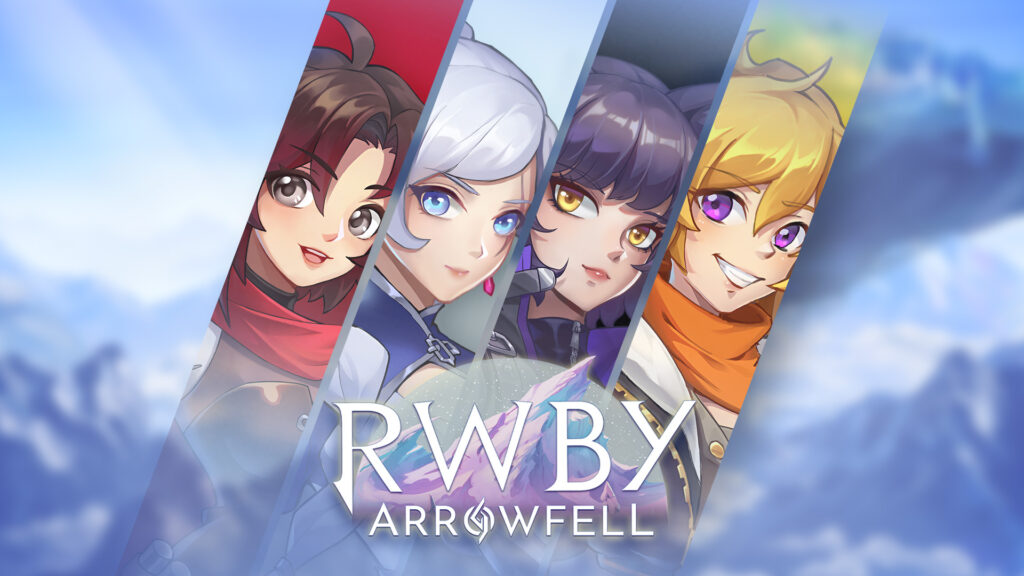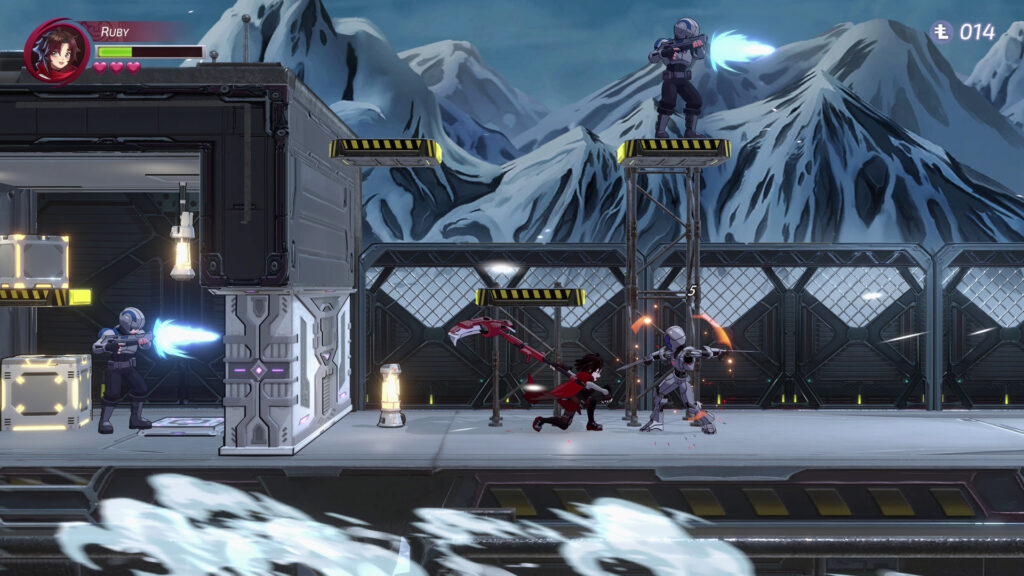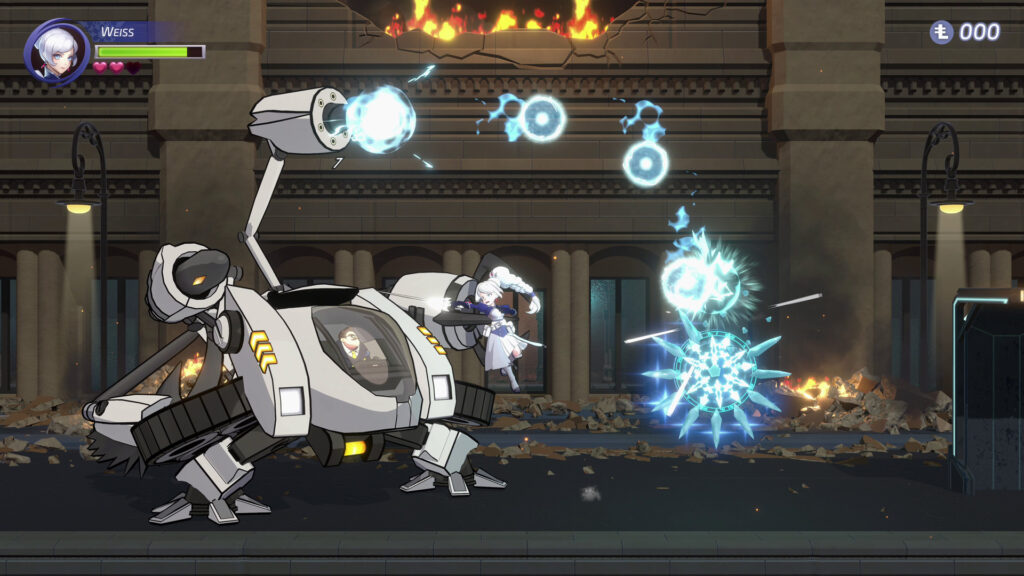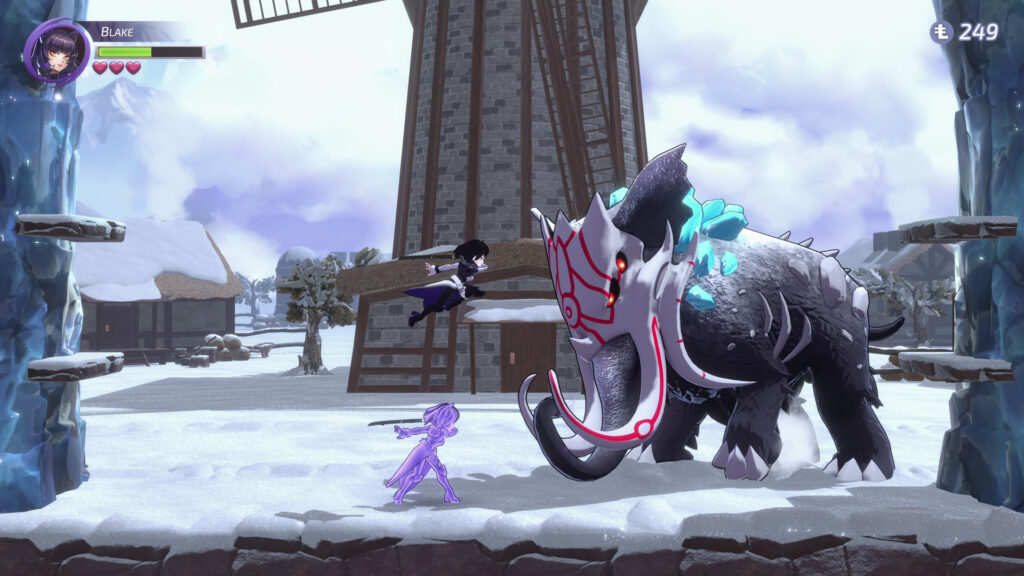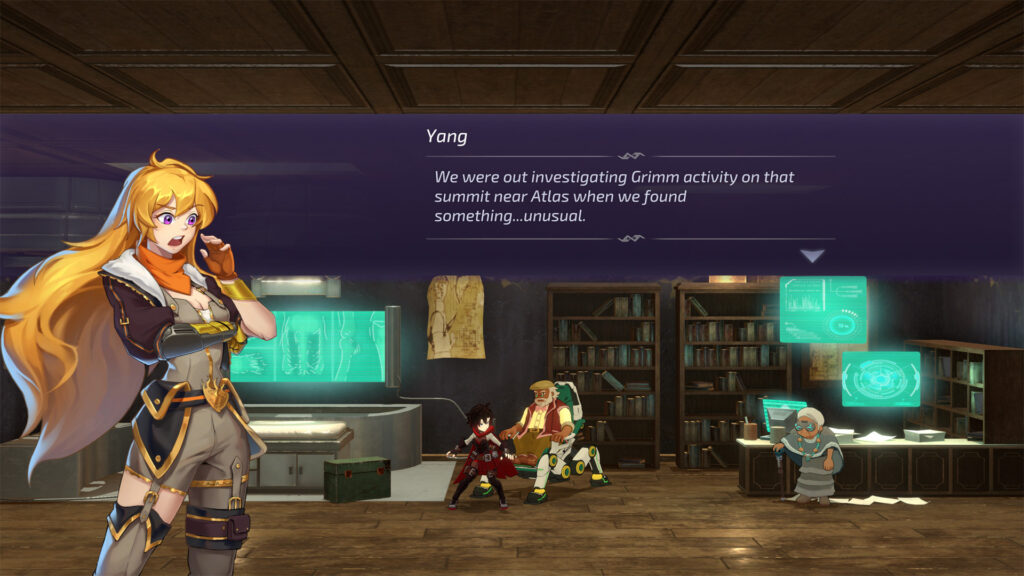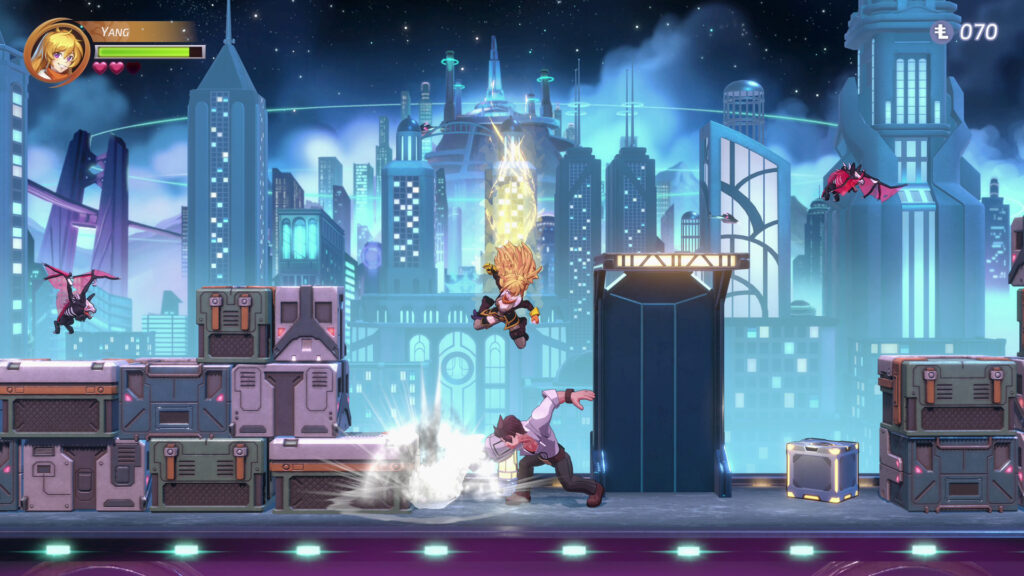Platforms: PC, Nintendo Switch, PlayStation, Xbox
[Review code provided by WayForward]Let’s kick things off with an important note: I am not a fan of RWBY. I know very little about the series, and what I have seen wasn’t my cup of tea. Most of my exposure comes from Blazblue: Cross Tag Battle, and that’s not really a great font of knowledge on the ins-and-outs of the RWBY series. You can call me a RWBY novice, if you like.
So, RWBY: Arrowfell is a side-scrolling action game with simple combat and light puzzle-solving elements. You control the eponymous team RWBY – Ruby, Weiss, Blake and Yang – as they attempt to unravel a conspiracy surrounding mysterious orbs that seem to attract the Grimm.
The game features an all-new canonical story set during Volume 7 of the series and penned by Kerry Shawcross, Miles Luna, and Eddy Rivas. You’ll meet familiar faces and brand new ones too (or just new ones, if you’re me) in an experience that’s meant to enrich the universe for fans of the series.
If you’re not a fan of the series, you might feel a bit left in the cold (and not just because of the snowy environments the game heavily features). While the story in the game is easy to follow and not especially complicated, you’re expected to know coming in what a ‘Semblance’ is, how ‘Grimm’ work, who ‘General Ironwood’ is, and why it’s a big deal that Team RWBY are licensed huntresses now. For better or worse, RWBY: Arrowfell doesn’t waste any time getting you up to speed.
If you are a fan, then you’ll probably get more out of the banter and appearances by (presumably) well known and well liked characters like Penny and Qrow. There’s a handful of animated cutscenes in the style of the series, as well as a few stages that feature vocal themes from the series (including a brand new one). This sort of fanservice is probably right up your alley.
That said, Arrowfell’s new characters – Team BRIR, a band of rogue huntresses – don’t get a lot of screen-time, despite being set up as a foil to Team RWBY early on in the game. Likewise, the game’s villain is rather predictable and easily swept away by the time things wrap up. I can’t say for sure if this story is important to the series’ ongoing narrative in some way, but I get the sense it’s all a bit inconsequential.
By now you’re probably about ready for me to talk about the actual ‘game’ part of RWBY: Arrowfell, so here we go.
RWBY: Arrowfell is structured a bit like a metroidvania, though more linear and broken up into individual stages (some of which you’ll revisit). Now and then the game presents obstacles that must be cleared by hot-swapping between the four playable characters and making use of their unique Semblance abilities. For example, Weiss can make a temporary platform which Yang can then stand on to break an elevated block, letting the team progress. Mapping swaps to the right analogue stick makes it slick and satisfying to quickly switch back and forth during more involved puzzles. Unfortunately, these puzzles are fairly scant – a lot of the time you’ll just bump into a single block for Yang to break, or a simple gap for Ruby to dash over.
As you progress and explore, you’ll pick up skill points that can be distributed between each member of the team. You’ll need these skill points, because without them your characters will start to feel pretty weak by even the mid-point of the game. This system felt a bit antithetical to the idea of using the whole team, however. The safest play is to max out one character (I chose Ruby, because her invulnerable dash and long reach make her easily the best combatant) and then only switch when you need to use a Semblance to progress.
Combat, meanwhile, is quite straight forward – each character has a basic attack, a projectile attack, and their Semblance. These functions vary a little character to character – Yang’s basic attack is stubby but fast, while Weiss’ projectile is slow and powerful – but overall, the whole team feels quite similar. I would have liked the girls to have greater differences and more unique functions to make them more individual and less like coloured keys for matching coloured doors.
Between exploration stages, you’ll be picking up quests from friendly NPCs. So far as I could tell, none of this was optional – aside from a few hidden skill points and perhaps some money grinding, the game is more-or-less linear. Helpful markers on the world map make sure you’re always able to find your next objective easily, even pointing you back to areas you’ve already been to once you gain upgrades that will let you progress deeper.
All in all, the game took me about 6 hours to complete, plus an hour or so where I went hunting hidden goodies for 100% completion (this is a pretty easy Platinum trophy, if that’s your thing). It should be noted that there’s no new game plus or even any difficulty settings – unless you want to replay it for fun, there’s no incentive to revisit the game. It’s a one-and-done experience.
So, where does this leave RWBY: Arrowfell as an overall package? I had a good time with it, but there’s a sense that it could have done more.
The story feels fairly throw-away, and while fans of the series will probably enjoy the ride, it’s hardly must-see stuff. For a non-fan like me, it didn’t get me invested in the characters or the world, nor did it make me want to explore the RWBY series further. However, as noted before, it didn’t seem like that was ever the intention – this feels like a ‘fans come first’ type of product.
The gameplay is effective and enjoyable, but lacks depth overall. Basing the game around switching characters is a smart play, but without mechanical diversity it feels undercooked. When the puzzles got a bit more tricky things clicked together nicely, but this happens only a handful of times during the whole game. On the whole, there’s not much reason to switch until you need to break a block or cross a gap.
Final Score
Summary
RWBY: Arrowfell is a tricky one to recommend if you don’t like the franchise, or if you’re looking to find a way in. To be blunt, there are better options out there and at more affordable prices, too. The game’s $30 base price is a bit steep, especially if you lack any investment in the series or the characters.
As a jumping on point, Arrowfell does very little to welcome newcomers in and show off the strong points of the series – you’re expected to have a grasp of things already. As a side-scrolling action game, Arrowfell is solid, but unremarkable – it’s polished, but a bit bland. But I think there’s juice left in the orange, and I’d like to see them squeeze it out with a sequel or follow-up game. The character switching mechanics could lead to a very interesting game, if they pushed the idea further.
If you are a big fan of RWBY, then you’re probably going to buy and enjoy the game regardless of what I say. It has enough fanservice and a smattering of new content to give die-hards a buzz. And, in my eyes, that’s likely the reason that RWBY: Arrowfell exists – to give hardcore fans of the series a good time plunking about as Ruby and friends for the six or so hours it lasts. If that’s what you want, then that’s exactly what you’ll get.

